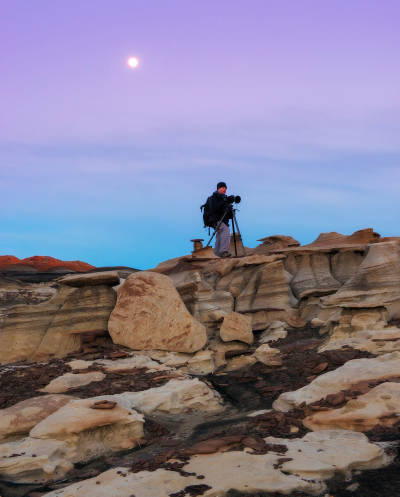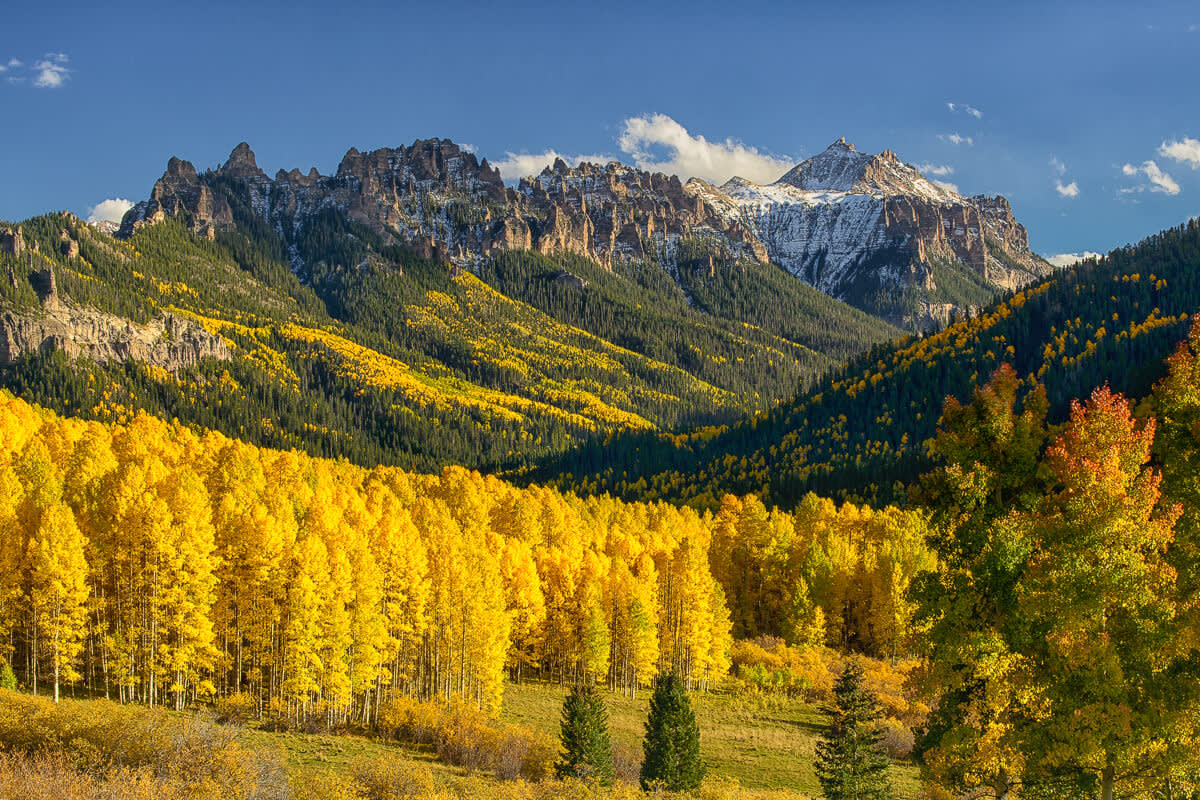
Colorado Aspens, Nikon D800e, 14-24mm f2.8
Autumn is a tremendous time of year to get outside and shoot both stunning vistas with high-end equipment as well as simple leaves on the ground while walking around in your neighborhood with your iPhone. To get you started, we’ve provided a few simple fall photography tips.
While the obvious subject of color is a key ingredient, other good composition guidelines still are in play. Repeating patterns are popular when shooting leaves on the ground, as are leading lines and subject placement.
Start in your own backyard
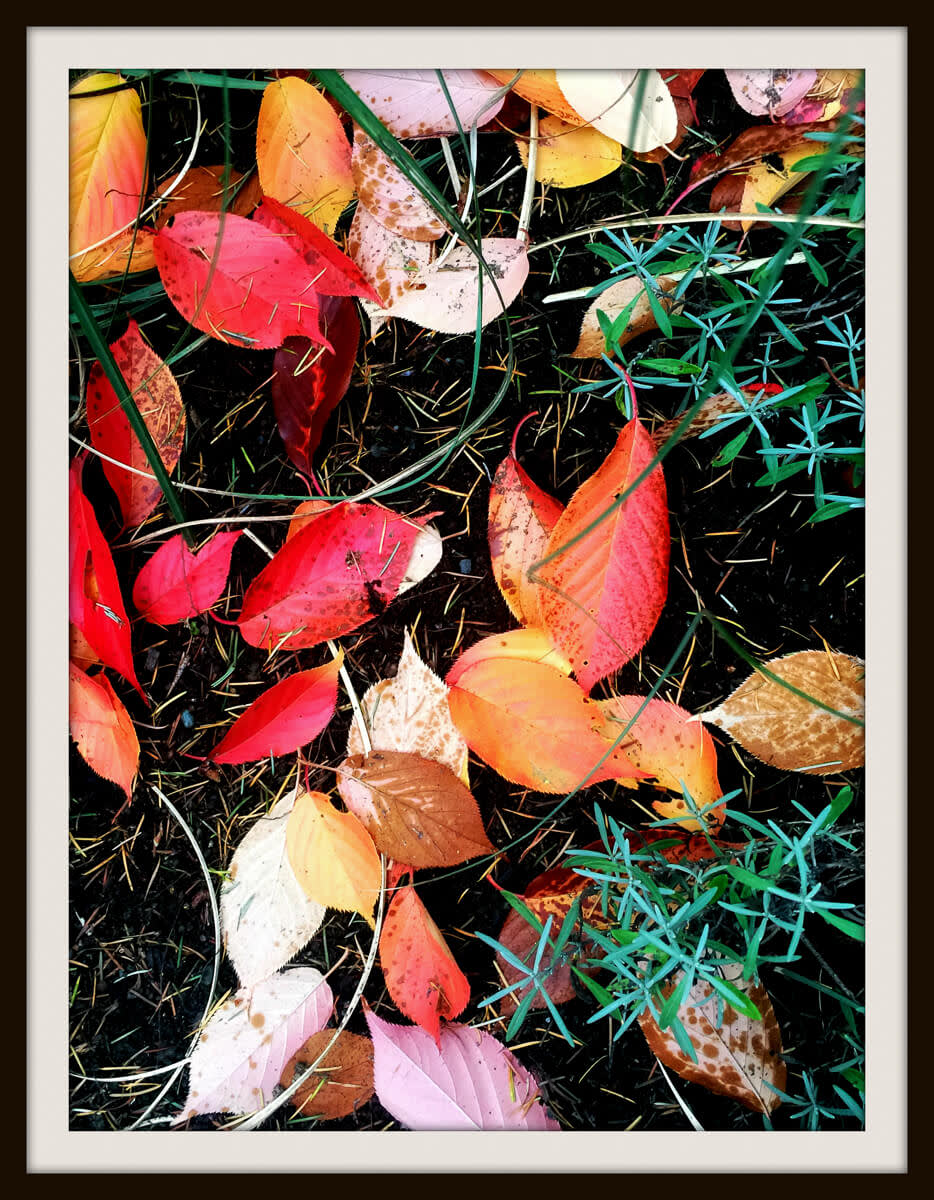
Neighborhood Leaves, iPhone 6+, PicMonkey edit
If you live in an area with a lot of trees, you won’t need to go far to get some intriguing shots. You won’t need a super fancy camera either. A lot of interesting shots can be taken out in your backyard with your mobile camera phone and edited in a program like PicMonkey to get some nifty effects. Many impromptu fall color shots work well taken up close, zooming into leaves on the ground, or sticking your camera into a colorful set of branches.
The above picture is from my front yard, taken with my iPhone 6+. I opened the original in PicMonkey and applied Orton effects, a bit of sharpening, a small boost effect to pop some of the colors, and used the Clone effect to get rid of a small piece of paper that was in the middle of the picture. Then I applied a Museum Matte Frame for a classic look, and posted it on Facebook. If I had any friends, I’m sure it would have gotten many likes.
Lead the eye
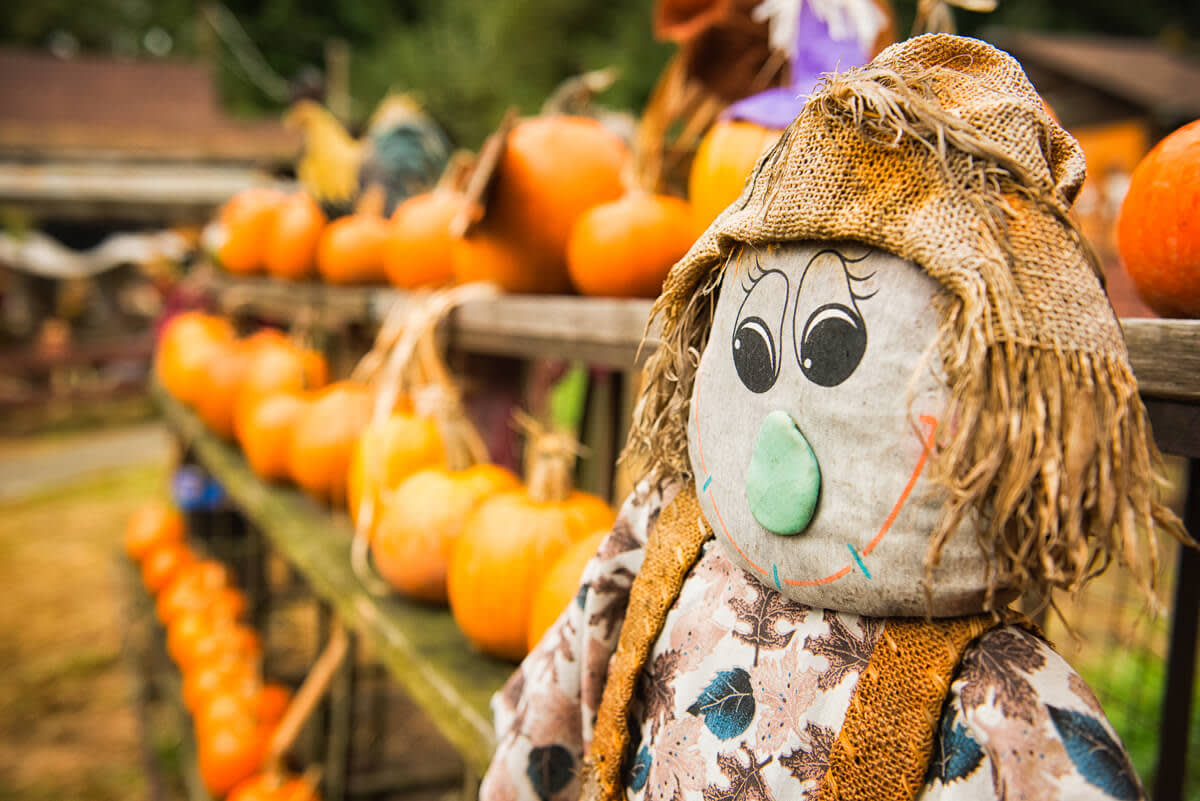
The Pumpkin Patch, Nikon D800e, 24-300mm f3.5-5.6
The neighborhood pumpkin patch is a great destination for colors and small scenes that speak to the season. In the below scene, the strawman is placed prominently in the foreground, and a shallow depth of field blurs the background, while the pumpkins are repeating in a line that draws your eye through the picture. This was taken with a Nikon D810 a few years ago using a wide aperture, but nowadays I probably would just have used my iPhone 6+ and blurred the background using the Soften or Focal Soften Effect in PicMonkey after the fact.
Try shooting color against dark background

Zion National Park, Nikon D800e, 14-24mm, 3-shot panorama
To make the colors pop and stand out, try moving around your subject until you have a dark background. Here in the Pacific Northwest we have a lot of evergreen trees that are a dark green or darker in shadow. A tree with bright yellow or orange leaves will pop if placed so that it is in front of a larger, dark background. In this picture, the fall trees of Zion National park are placed in front of dark cliff walls that let the colors and trees stand out.
Use nature as an effect
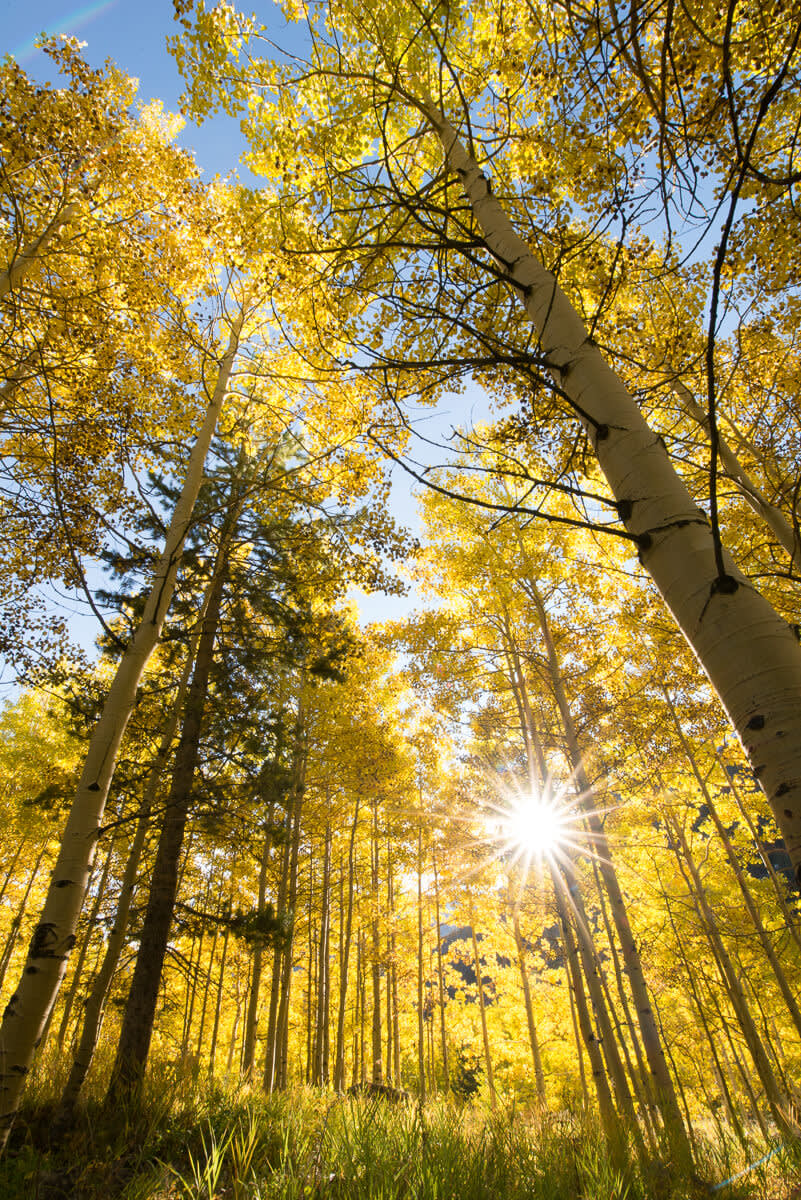
Rocky Mountains, Colorado, Nikon D800e, 14-24mm f2.8
Sunburst through trees in color creates a unique vantage point. The biggest trick is to use a very small aperture (f22 was used above). This can be used on the sun, streetlights at night, or bright stars. But lens flare and proper exposure when shooting the sun are also a bit tricky. To avoid lens flare, hide the sun partially behind leaves and branches, and take a number of pictures until the flare is prominent. To ensure proper exposure, turn on the highlight indicator on the camera (referred to as “blinkies” for blinking in the area that is overexposed), and take a number of pictures with varying shutter speeds until you have a picture where most of the blinkies are gone (except on the sun itself). You can also get a sunburst picture with your mobile phone camera, but it requires a bit of experimenting and patience.
Take advantage of the weather

Morning Blanket, Nikon D800e, 70-200mm f2.8
If you’re lucky enough to encounter a winter storm during the height of fall color, you can get a crisp and soothing landscape that contradicts the earlier “dark background” recommendation.
Shoot for the red
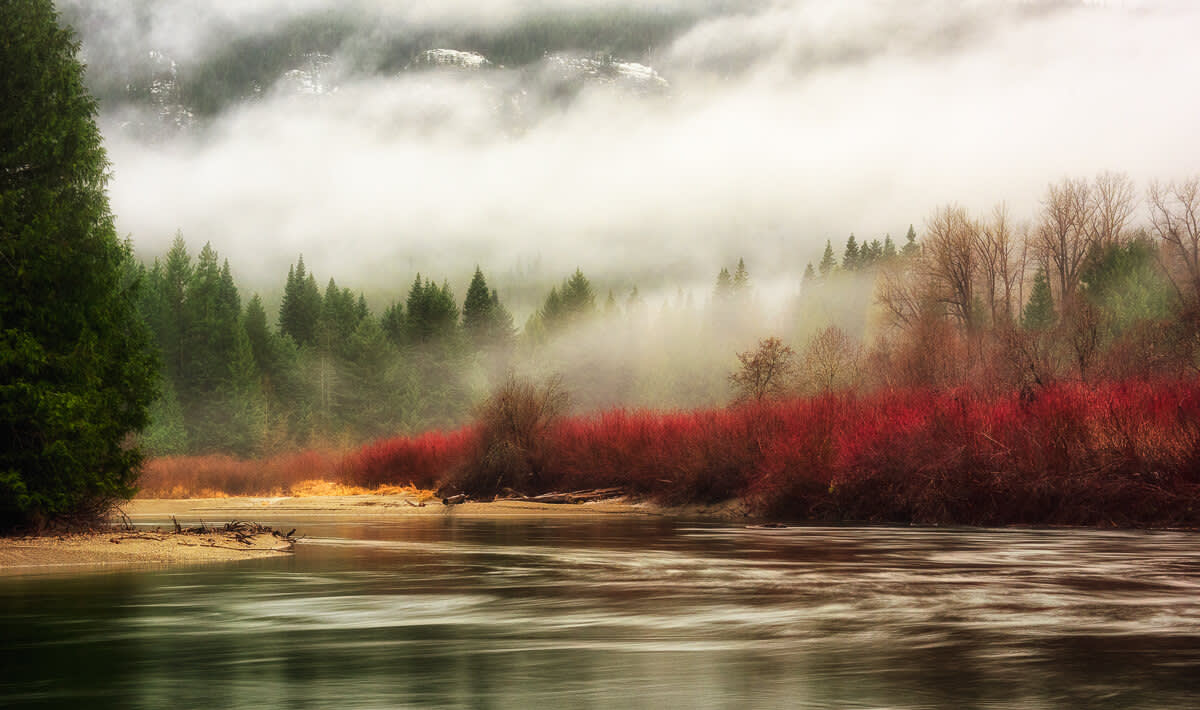
Morning Blanket, Nikon D800e, 70-200mm f2.8
An old photography adage says if you see red, shoot it. These bushes in the Cascade Mountains of Western Washington were peaking red while the rest of the area had already faded into brown. The shutter speed is around 1 second to get the water to blur, and the grey day made for good color contrast in the rest of the scene.
All in all, while the colors won’t last very long, the possibilities for shooting fall colors are numerous if you look for both the small and large, and you don’t need more than your phone camera to have some good fun.
